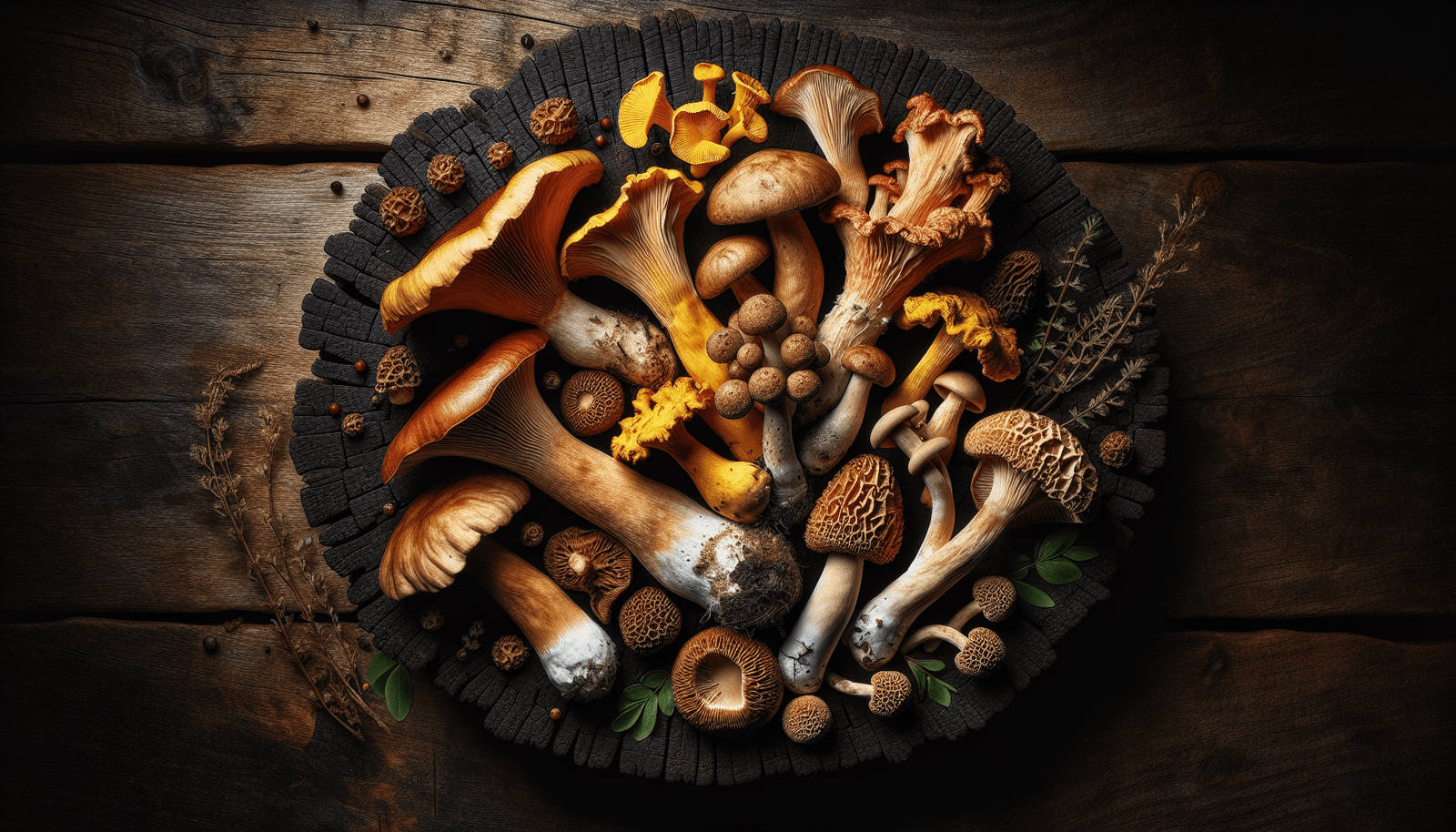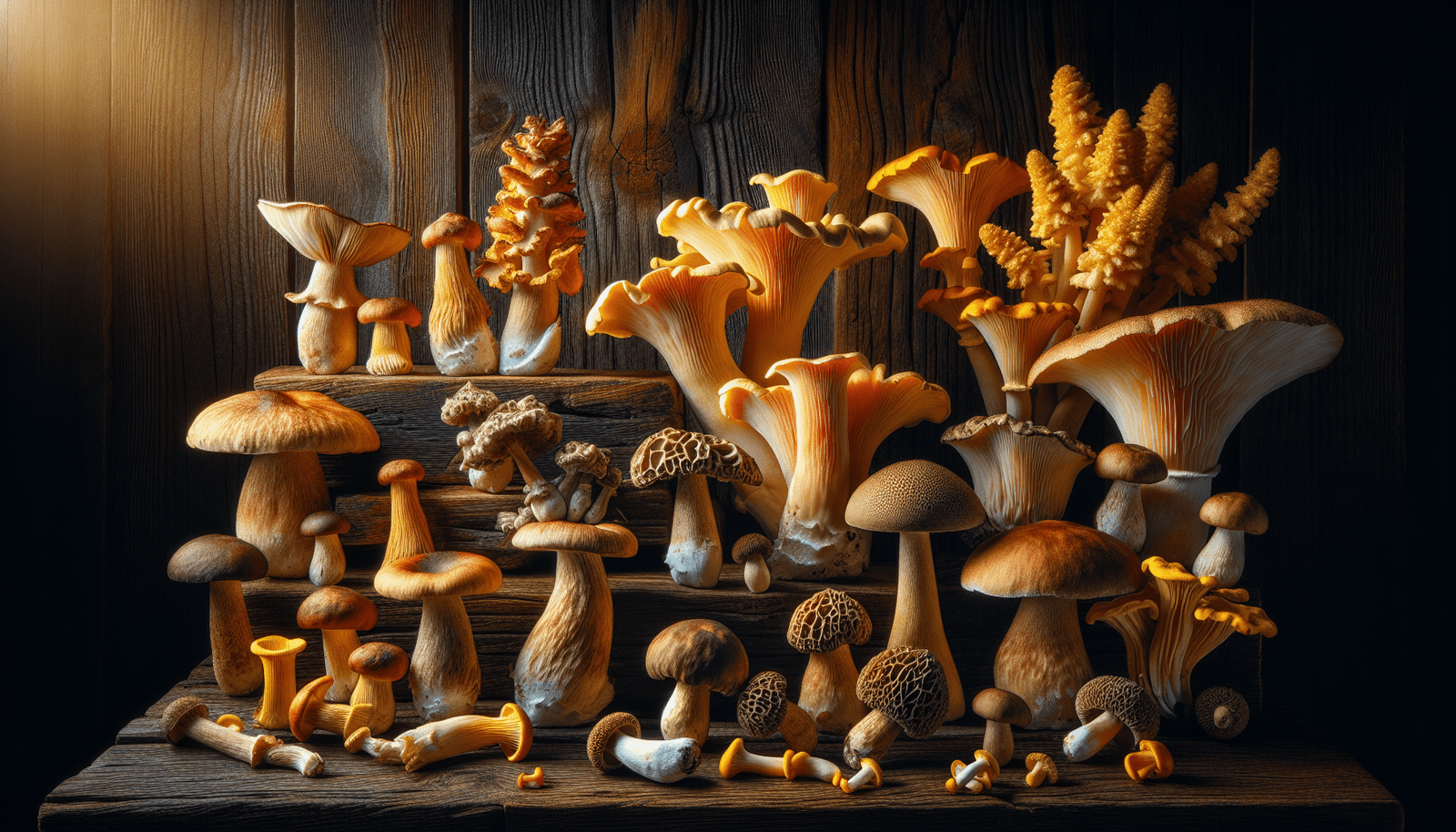Have you ever wondered how you can add a touch of wild to your international dishes using mushrooms? If your culinary adventures have been longing for something a bit more intriguing, wild mushrooms might be your next favorite ingredient. From their earthy flavors to their intriguing textures, these fungi can elevate a dish from ordinary to extraordinary. Whether you are familiar with them or exploring them for the first time, you’ll find that the world of wild mushrooms offers something deliciously unique.
Understanding Wild Mushrooms
Before diving into recipes and cooking techniques, it’s important to understand why wild mushrooms are so highly prized. Wild mushrooms are what you would find growing naturally in forests, fields, or other outdoor environments—unlike the cultivated varieties often found in grocery stores.
Unique Flavors and Textures
Each type of wild mushroom comes with its own unique characteristics. Some are nutty, others boast a deep earthiness, and a few even have fruity notes. The variety in textures ranges from velvety and smooth to chewy or meaty, providing an array of options to suit any taste or culinary challenge.
Nutritional Powerhouses
Mushrooms provide not only flavor but also substantial nutritional benefits. They are low in calories but rich in essential nutrients such as vitamins, minerals, and antioxidants. Their high protein content makes them a great plant-based protein source, especially for vegetarians and vegans.
Common Wild Mushroom Varieties
To get you started, here’s a table highlighting some popular wild mushroom varieties:
| Mushroom Type | Flavor Profile | Texture | Common Uses |
|---|---|---|---|
| Morels | Earthy, nutty | Spongy | Sauces, soups, sautés |
| Chanterelles | Fruity, peppery | Firm and chewy | Roasts, stir-fries, pastas |
| Porcini | Deeply earthy, umami | Meaty | Risottos, stews, stocks |
| Truffles | Pungent, musky | Grainy | Shaving over dishes, infusing oils |
| Oyster | Subtle, mild | Delicate | Stir-fries, soups, grilling |
Selecting and Preparing Wild Mushrooms
Choosing the right mushrooms can make a significant difference in your dish. With wild mushrooms, there are some additional considerations to ensure safety and maximize flavor.
Harvesting and Foraging
Foraging for your own wild mushrooms can be a rewarding experience, but it’s essential to be knowledgeable about which mushrooms are safe to consume. Some wild mushrooms are toxic, so consider attending a foraging workshop or consulting with an experienced mycologist. Sustainability in foraging practices ensures that wild environments are preserved for future foragers.
Buying Wild Mushrooms
If you prefer to purchase, look for wild mushrooms at farmers markets, specialty grocers, or online suppliers. Check for firmness, no sliminess, and a fresh, woody aroma. Avoid mushrooms with dark spots or slimy patches, as these are signs of aging or spoilage.
Cleaning and Storage
Gently brush off any dirt or debris from mushrooms using a soft brush or a damp cloth. Avoid soaking them in water as they absorb moisture. Store wild mushrooms in a paper bag in the refrigerator to allow them to breathe and stay fresh for up to a week.

Cooking Techniques for Wild Mushrooms
Cooking with wild mushrooms is an art that encapsulates bringing out their inherent flavors while maintaining their unique textures. Here are some techniques that can help.
Sautéing and Pan-frying
Sautéing mushrooms in butter or olive oil at medium-high heat enhances their natural flavors. They are best cooked in batches for even browning. Season simply with salt and pepper to start, then add herbs or garlic for additional flavor.
Grilling
Wild mushrooms are excellent for grilling. Their firm texture holds up well to high heat, and the smokiness complements their earthy notes. Skewer larger mushrooms or use a grill basket for smaller varieties.
Roasting
Roasting mushrooms in the oven with a bit of olive oil, salt, and fresh herbs like thyme or rosemary intensifies their flavors. This method is perfect for preparing mushrooms to accompany meats or in warm salads.
Incorporating into Broths
Wild mushrooms can infuse broths with deep, umami flavors, serving as a base for soups, stews, and sauces. Simmer dehydrated mushrooms with onions, garlic, and other aromatics to create a flavorful broth.
International Dishes Enhanced by Wild Mushrooms
Incorporating wild mushrooms into international cuisines adds depth and a sophisticated twist. Here’s how mushrooms enhance some global favorites.
Italian: Wild Mushroom Risotto
The creamy texture of risotto complements the chewy heartiness of wild mushrooms like porcini. Stirring in sautéed mushrooms as the risotto finishes cooking infuses the dish with earthiness, enhanced further with a sprinkle of parmigiano-reggiano.
French: Coq au Vin with Morels
This traditional French dish gains new dimensions when morels are used. The mushrooms soak up the deep, aromatic flavors of the wine and spices, adding complexity to each bite.
Asian: Miso Soup with Enoki
Enoki mushrooms, although cultivated, are often foraged wild in Asia and can be a delightful addition to miso soup. Their delicate texture balances the salty miso and creates a comforting, savory dish.
Mexican: Tacos with Chanterelles
Replace traditional meat fillings with fried chanterelles for a plant-based taco option. Chanterelles provide a slightly peppery taste that pairs beautifully with fresh cilantro, lime, and cotija cheese.
Middle Eastern: Shakshuka with Mushrooms
Infuse the classic Shakshuka with meaty wild mushrooms to enrich its texture. The umami from mushrooms beautifully complements the spicy tomato and egg ensemble, making for a hearty breakfast or dinner.

Health Benefits of Wild Mushrooms
Wild mushrooms are not only culinary stars but also contribute significantly to health. Here’s why they deserve a place in your diet.
Immune System Support
Beta-glucans found in mushrooms have immune-boosting properties. Regular consumption may enhance your body’s ability to fight off infections and diseases.
Antioxidants and Anti-inflammatory
Wild mushrooms are rich in antioxidants, which help combat oxidative stress and reduce inflammation—a vital feature for promoting overall health.
Rich Source of Vitamins and Minerals
Mushrooms provide a wide range of B-vitamins, vitamin D, selenium, and potassium, which are critical for various bodily functions, including brain health and bone strength.
Heart Health
Their ability to lower cholesterol levels and reduce hypertension risk makes mushrooms a heart-friendly food option.
Sustainability and Ethical Foraging
Being conscientious about our consumption can contribute to a more sustainable future. Here’s how mushrooms play a part:
Ethical Foraging Practices
When foraging for wild mushrooms, it’s crucial to follow ethical practices. Harvest mushrooms gently and only take what you will use, leaving some for the ecosystem’s balance and for future growth.
Legal Considerations
Before foraging, familiarize yourself with local regulations. Some areas require permits or have restrictions on what can be collected.
Growing Your Own Mushrooms
For those who prefer gardening, home mushroom kits are available. These kits allow you to cultivate your own supply sustainably and are a fantastic way to enjoy fresh mushrooms year-round.
Creative Culinary Applications
If you’re looking to push boundaries, here are some innovative ways to incorporate wild mushrooms into your culinary creations.
Mushroom Desserts
Sweet treats might not be the first thing that comes to mind, but mushrooms can surprise—paired with chocolate, they enhance a dessert’s richness. Try a truffle-infused chocolate cake for an earthy sweetness.
Smoothies
Add powdered mushroom supplements to your morning smoothie for a nutritional boost without compromising flavor.
Coffee Alternatives
Mushroom coffee blends are rising in popularity, offering a less caffeinated yet equally energizing alternative to traditional coffee, with added health benefits.
Engaging with The Mushroom Community
Connecting with fellow mushroom enthusiasts can be a joy. Sharing recipes, foraging experiences, and even growing tips fosters a sense of community and enhances your culinary journey with wild mushrooms.
Participate in local workshops, join online forums, and exchange insights with others, creating a network through which you can truly enrich your knowledge and experiences with these fascinating fungi.
As you incorporate these wild wonders into your kitchen, remember that cooking is not just about following recipes. It’s about creativity, exploration, and above all—enjoyment. So, spice up your kitchen with the timeless elegance of wild mushrooms and discover flavors that transcend borders and inspire your culinary adventures.
